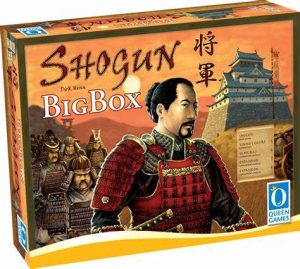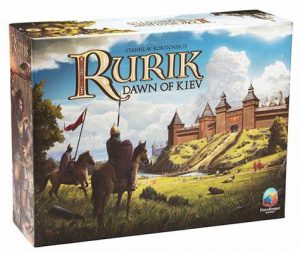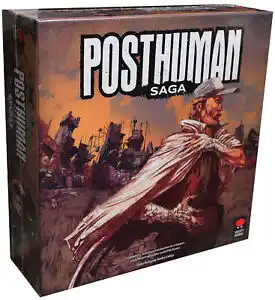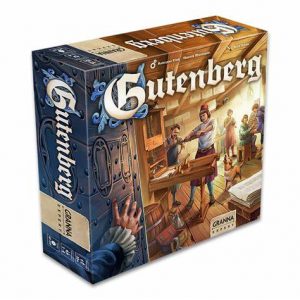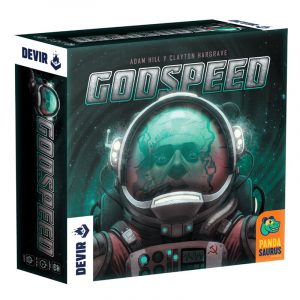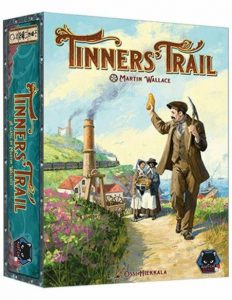
Tinner's Trail
In Tinners’ Trail, set in 19th century Cornwall, you represent a mining conglomerate at the height of the tin and copper mining industry. You must buy plots of land across Cornwall in auctions and survey them for tin and copper, always managing your “work points” and money effectively.
Once you have a mine in place, it’s time to extract the ore and (ideally) make a profit, but the deeper your mine goes, the more expensive the process gets. To reduce the cost of mining, you can place developments, such as ports, train stations, and adits (drainage tunnels), but there’s only so many improvements to go around. Once you have made your money — trying to time the market to sell when prices are high — you can invest it in industries outside of Cornwall, which gains you victory points. The earlier you invest, the better the return. Can you outplay the competition and make the most money, or will you be left without two shillings to rub together?
This edition of Tinners’ Trail differs from the original 2008 version in several ways. The player count, for example, is now 1-5 instead of 3-4, and the resources on the board are now set up via tiles instead of die rolls to maintain variability while reducing the randomness. Dual-use cards are now an important part of the game, giving you information before an auction or an extra boost after an auction.
Game Mechanics:
- Action Points
- Auction/Bidding
- Dice Rolling
- Economic
Game Specifications:
- 3 – 4 Players
- 60 – 90 Minutes
- Difficulty Weight 2.83

